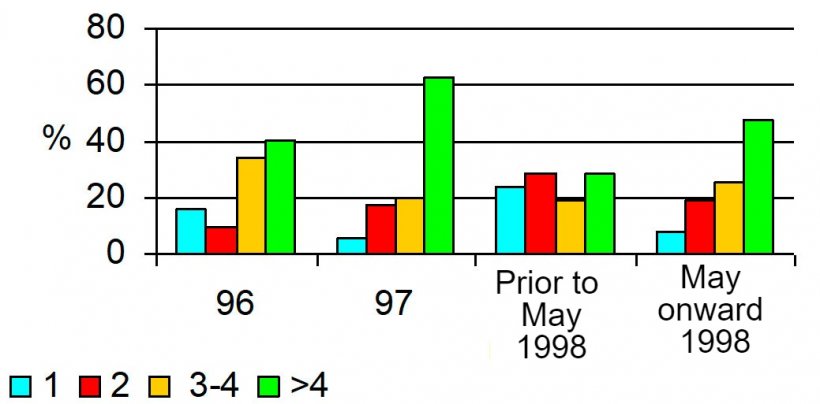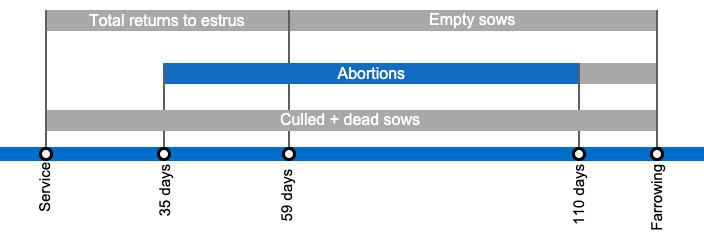Abortions are the intrauterine death of fetuses (involving loss of gestation between days 35 and 110). All of the fetuses are expelled.
The percentage of abortions among serviced sows should always be less than 2%. When this level is surpassed and there is a greater incidence of abortions at a certain point in gestation, the possible causes are:

- Sow regrouping, storms, vaccinations, changes in barn or pen, etc. In these cases the abortions will be seen in sows of any parity that have been subjected to the source of stress. Keep in mind that the abortion can occur up to 7 days after the stress event. Usually they occur grouped in time.
- Some infectious reproductive diseases will cause abortions in the second half of gestation (+70 days), the most common being PRRS and leptospirosis. The infectious diseases that can cause abortions generally increase abortions across all parities (see graph).

The problems appear from January to May of 1998 and the abortions rise to 4%, while during the other periods the abortions are lower than 2%. A different distribution of these problems could be observed, affecting all parities equally.
- Catabolic states (low feed intake with or without low ambient temperature) tend to be more frequent towards the end of gestation, when the needs of the sow are greater.
Use the flow chart to continue your troubleshooting or to access other parts of the tool.

Types of gestation losses that can lower the farrowing rate, detailing the different types of returns to estrus based on when they occur.





